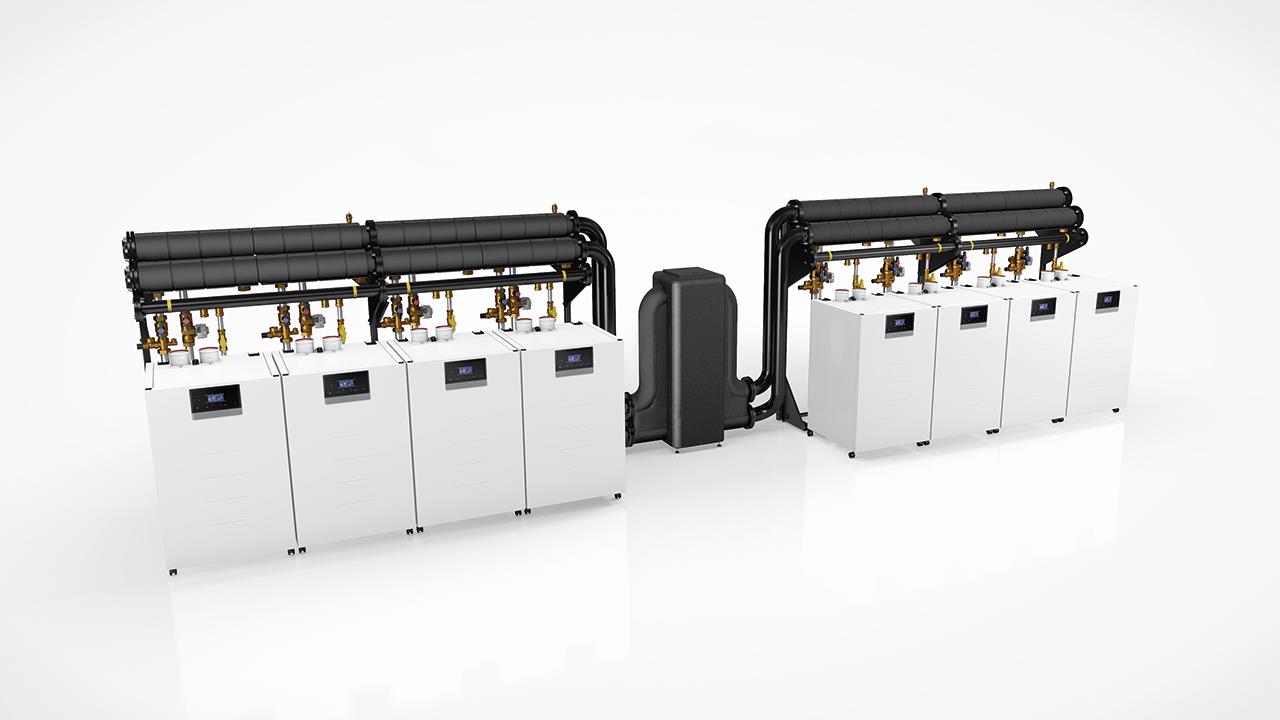


Paul Martin, National Sales Manager at ATAG Commercial, looks at how many of the key elements inside modern boilers are integrated to further enhance energy efficiency.
Modern condensing boilers utilise a number of factors to ensure they operate efficiently and effectively. Components, such as the burner and controls, as well as the latest modulating circulation pumps and energy-efficient heat exchangers, are all integral to long-term performance and reliability.
The latest units to enter the market (such as ATAG Commercial’s new XL-F and XL-W models) have taken things a step further by integrating all the main components within the boiler itself, significantly reducing installation time, costs, and the space required. Plus, by making all these key components accessible from the front of the boiler, installation and ongoing servicing and maintenance is made easier, with the additional benefit of reducing engineers’ time on-site.
One of the essential partnerships in ensuring energy efficiency remains as high as possible is that between the pump and the heat exchanger. It is recognised throughout the industry that modern heat exchanger technology has evolved considerably during the last ten years or so, with an increased ability to maximise heat transfer, while maintaining reliability. This can be attributed to the vast majority of modern heat exchangers being made from stainless steel and comprising multiple, specially engineered pipes, ensuring the capacity to achieve high levels of heat transference and condensation.
Modern heat exchangers are also designed to optimise the transfer of the thermal energy generated by burning gas into the system water. However, in order to absorb the maximum amount of heat, the flow rate and turbulence of the water passing through it is crucial. This is what makes the pump so important.
In high-efficiency boilers, a modulating circulation pump is utilised to ensure the water inside the heat exchanger remains turbulent. This turbulence agitates the water flow, ensuring there is no insulating barrier between the heated water and the wall of the heat exchanger, resulting in a rapid transfer of heat.
Turbulent flow occurs when the velocity in the water channel is high – a factor determined by the pump. As the pump is moving water around inside a small closed system (between the boiler and the low loss header or heat exchanger, depending on the application), it does not expend a lot of energy, with the turbulent flow of the water also helping to preserve the lifespan of the heat exchanger itself by reducing the build-up of any precipitates on the heat transfer surface.
Turbulent flows always have a higher heat transfer coefficient compared to laminar flows, ensuring energy efficiency remains as high as possible. The higher transfer rates also ensure a boiler reaches set-point temperature quicker. The excellent heat transfer provided by the modulating control system, the condensing heat exchanger, and the modulating pump, allow the heat exchanger to reach and maintain setpoint temperature while minimising energy input.
This brings us full circle back to the heat exchanger, where using the highest quality materials ensures the most efficient method of heat transfer. In heat exchangers with specially designed hydraulic chambers, water turbulence is optimised to ensure maximum heat transfer, while maintaining the lowest possible pressure drop. Some models now also benefit from dual heat exchangers that operate independently from one another, effectively working as an internal cascade. So, should one heat exchanger require replacement or repair, the other is still fully operational, ensuring a system doesn’t completely lose heat during maintenance or servicing.
Modulation is another important factor when it comes to saving energy. Boilers with wide modulation ratios not only improve efficiency, they also reduce wear and tear on components. This ratio is a boiler’s ability to reduce its maximum output to its minimum output, with the consensus being the wider the modulation range, the better (e.g. a boiler with a 150kW maximum output and a 37.5kW minimum output has a modulation ratio less than 4:1, however, a maximum output of 180kW and a minimum output of 18kW has a wider – and significantly better – modulation ratio of 10:1.) As a result, boilers are considered to have a ‘good’ modulation ratio when their minimum output is one-fifth or sixth of the maximum output.
The latest condensing gas boilers certainly have a lot to offer, especially in terms of efficiency and reliability. Technological advances in key components such as heat exchangers and circulating pumps have contributed to this, resulting in higher modulation ratios and faster heat-up times. Plus, with all parts now being integrated into the boiler design, installers are further aided when it comes to servicing and maintenance, ensuring long-term reliability and exceptional levels of performance.
If you'd like to keep up-to-date with the latest developments in the heating and plumbing industry, why not subscribe to our weekly newsletters? Just click the button below and you can ensure all the latest industry news and new product information lands in your inbox every week.